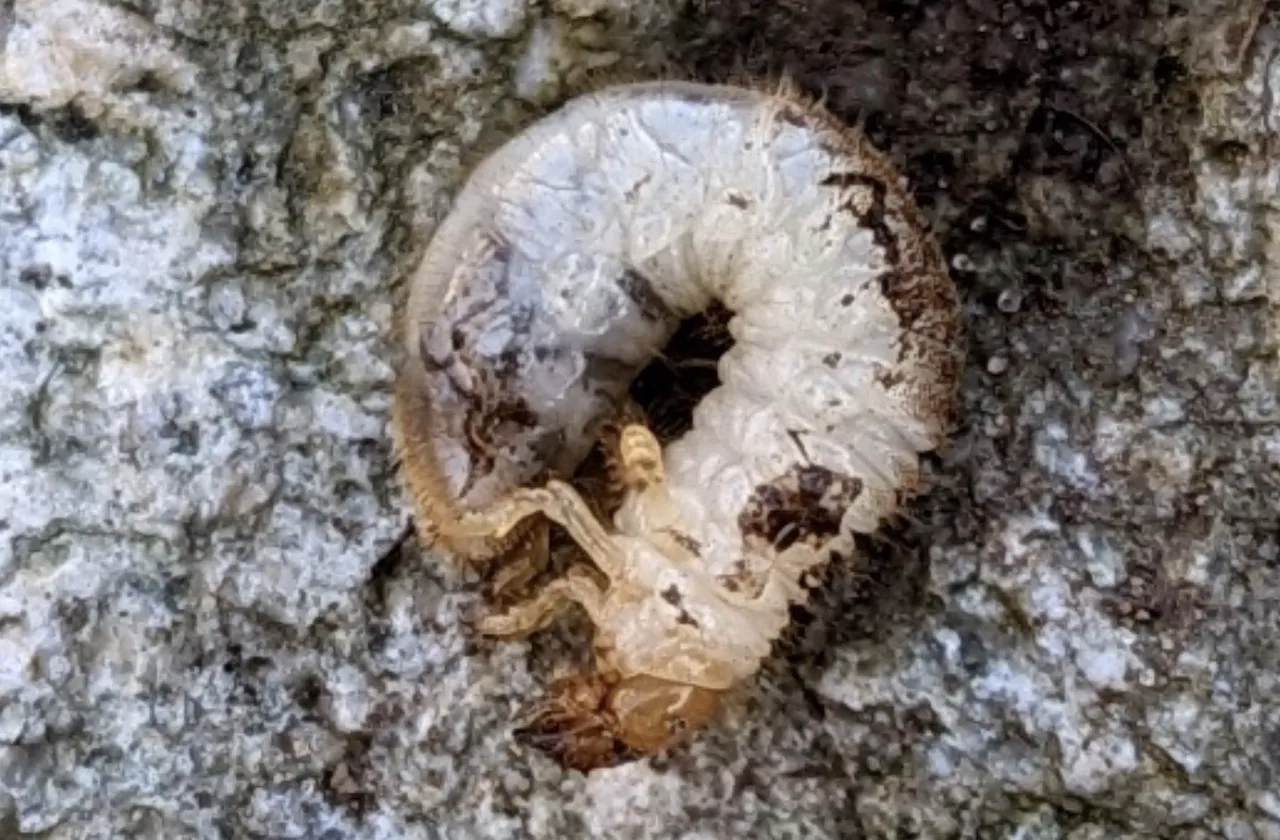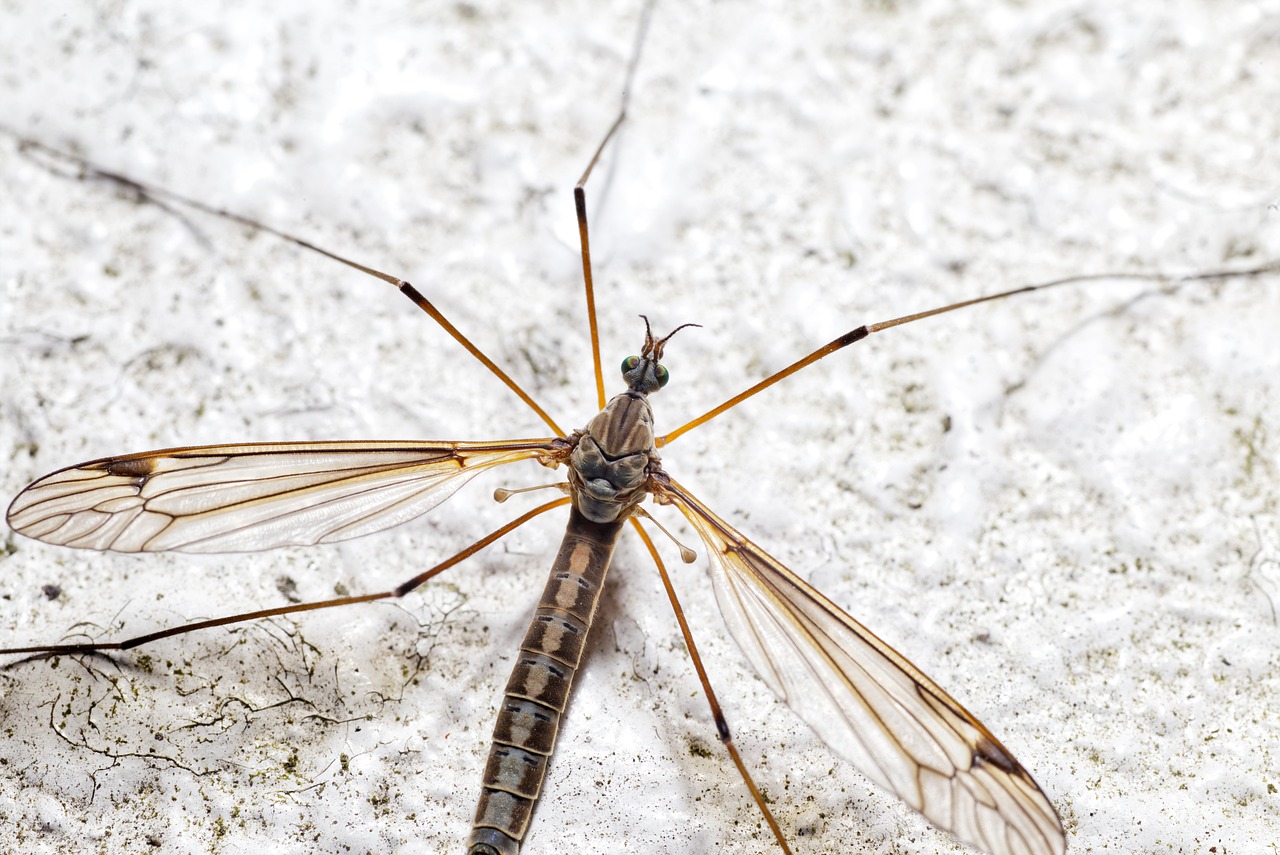Hi @minilaura
Thanks for your question on why your lawns dying.
It certainly looks like either leather jackets or chafer grubs, both of which cause brown patches to appear on your lawn that spread.
What is a chafer grub and how do they damage lawns?
A chafer grub is the larval stage of certain beetles belonging to the family Scarabaeidae. These grubs are commonly found in lawns and can cause significant damage to the grass roots, resulting in patches of dead or dying grass like the picture above of your lawn.

Chafer grubs are creamy white in colour, have a C-shaped body, and are typically about 2 centimeters (0.8 inches) long when fully grown. They feed on the roots of grass and other plants, which can lead to the thinning and weakening of the turf. Which results in brown patches that spread.
The damage caused by chafer grubs is usually most noticeable during the late summer and early autumn months. As the grubs feed on the grassroots, the affected areas of the lawn may become spongy and discoloured. Patches of yellow or brown grass may appear, and these areas can be easily lifted or rolled back like a loose carpet. In severe infestations, the grass may completely die off, leaving bare soil behind.
Another factor that exacerbates the damage is that animals such as birds, squirrels and other wildlife being are attracted to lawns infested with chafer grubs. These animals dig up the grass to feed on the grubs, causing additional destruction to the lawn.
What is a leather jacket?
A leatherjacket is the larval stage of certain species of crane flies, also known as daddy longlegs or mosquito hawks. These larvae are commonly found in lawns and can cause damage to the grass roots, resulting in patches of weakened or dead grass.
Leatherjackets are cylindrical, grayish-brown or tan-colored larvae with a tough, leathery texture, hence the name. They have a distinct head capsule and legless bodies, which can grow up to 4 centimeters (1.5 inches) in length. Leatherjackets feed on the roots of grass and other plants, causing harm to the turf.

How to fix a grub-damaged lawn?
The best method is, as you've said, nematodes. However, these will only treat the larvae. The reason you may think it's not working is the grubs are still showing that were past the larvae stage. I reckon this area will soon calm down. Miracle grow won't stop an infestation, and a better lawn feed is a slow-release fertilizer - see my guide here and video below. Make sure you treat with nematodes again next year but in early spring as a preventative measure.
https://youtu.be/5BhGtCjT2TQ
Hope that helps!
Hi @minilaura
Thanks for your question on why your lawns dying.
It certainly looks like either leather jackets or chafer grubs, both of which cause brown patches to appear on your lawn that spread.
What is a chafer grub and how do they damage lawns?
A chafer grub is the larval stage of certain beetles belonging to the family Scarabaeidae. These grubs are commonly found in lawns and can cause significant damage to the grass roots, resulting in patches of dead or dying grass like the picture above of your lawn.

Chafer grubs are creamy white in colour, have a C-shaped body, and are typically about 2 centimeters (0.8 inches) long when fully grown. They feed on the roots of grass and other plants, which can lead to the thinning and weakening of the turf. Which results in brown patches that spread.
The damage caused by chafer grubs is usually most noticeable during the late summer and early autumn months. As the grubs feed on the grassroots, the affected areas of the lawn may become spongy and discoloured. Patches of yellow or brown grass may appear, and these areas can be easily lifted or rolled back like a loose carpet. In severe infestations, the grass may completely die off, leaving bare soil behind.
Another factor that exacerbates the damage is that animals such as birds, squirrels and other wildlife being are attracted to lawns infested with chafer grubs. These animals dig up the grass to feed on the grubs, causing additional destruction to the lawn.
What is a leather jacket?
A leatherjacket is the larval stage of certain species of crane flies, also known as daddy longlegs or mosquito hawks. These larvae are commonly found in lawns and can cause damage to the grass roots, resulting in patches of weakened or dead grass.
Leatherjackets are cylindrical, grayish-brown or tan-colored larvae with a tough, leathery texture, hence the name. They have a distinct head capsule and legless bodies, which can grow up to 4 centimeters (1.5 inches) in length. Leatherjackets feed on the roots of grass and other plants, causing harm to the turf.

How to fix a grub-damaged lawn?
The best method is, as you've said, nematodes. However, these will only treat the larvae. The reason you may think it's not working is the grubs are still showing that were past the larvae stage. I reckon this area will soon calm down. Miracle grow won't stop an infestation, and a better lawn feed is a slow-release fertilizer - see my guide here and video below. Make sure you treat with nematodes again next year but in early spring as a preventative measure.
Hope that helps!
 Lee Burkhill: Award Winning Designer & BBC 1's Garden Rescue Presenters Official Blog
Lee Burkhill: Award Winning Designer & BBC 1's Garden Rescue Presenters Official Blog



